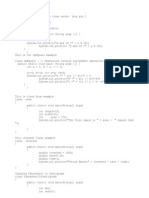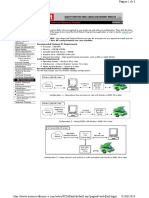0% found this document useful (0 votes)
9 views13 pagesin Java Java 2 Class Test, the-WPS Office
The document provides an overview of Java inheritance types, including single inheritance and multiple inheritance through interfaces, as well as the use of the `final` keyword. It covers exception handling, thread creation, applet lifecycle, and file operations, including methods for copying files and writing to them. Additionally, it discusses Java's package structure and the hierarchy of stream classes.
Uploaded by
Priyanka ThadkeCopyright
© © All Rights Reserved
We take content rights seriously. If you suspect this is your content, claim it here.
Available Formats
Download as DOCX, PDF, TXT or read online on Scribd
0% found this document useful (0 votes)
9 views13 pagesin Java Java 2 Class Test, the-WPS Office
The document provides an overview of Java inheritance types, including single inheritance and multiple inheritance through interfaces, as well as the use of the `final` keyword. It covers exception handling, thread creation, applet lifecycle, and file operations, including methods for copying files and writing to them. Additionally, it discusses Java's package structure and the hierarchy of stream classes.
Uploaded by
Priyanka ThadkeCopyright
© © All Rights Reserved
We take content rights seriously. If you suspect this is your content, claim it here.
Available Formats
Download as DOCX, PDF, TXT or read online on Scribd
/ 13



































































































